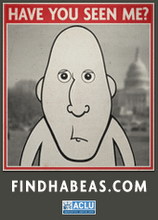Streaming arrives with all the subtlety of a Golden Corral all-you-can-eat buffet. Do independent musicians benefit, or does the infinite-playlist scroll mean a lot of vomiting? 2006-2011
The launch of iTunes in 2003-04 gave the music industry the first
monetizable download market, but downloaded files had the shortest market
dominance history in recorded music. While files still were downloaded in the
2020s, the era of market peak lasted only from 2003 to about 2008 or 2010. Opponents
of streaming figured that even those customers who were short on space for
physical objects would prefer downloaded files to streaming music, because
there was a local instantiation of the music somewhere within the client’s
control.
But it turned out very few
people cared if the piece of music was in “the cloud” or on a local disc. This
may have been misplaced trust, since eventually Apple, Amazon Web Services and
Google not only claimed to hold ultimate rights to music the consumer had
downloaded from the streaming provider, they even claimed special rights to the
consumer’s own music – if users uploaded
their own music from local storage to the cloud, the cloud owners claimed the
right to modify, control, or delete that music supposedly owned by the consumer.
The curmudgeon might grumble that “the cloud is never your friend,” but few
people were listening, hence the short history of the dominance of downloads.
The arrival of ubiquitous
desktop broadband services and 4G/5G wireless services arrived at about the
same time as Spotify’s 2011 launch. Download revenue fell at a rate of 3
percent per year from then on, estimated at $1.4 billion in 2023 and $1.23
billion by 2027. By the pandemic period, downloads already counted for less
than either vinyl or CD sales. But here’s a funny thing: By 2005, vinyl LPs
were making a return, even among people who did not own a turntable, because
they were valued as objets d’art for the
music collector to keep. In the mid-2000s, many were predicting that CDs would
enjoy a similar renaissance, because lossless compression made for better audio
quality than either downloads or streaming. But the latter didn’t happen.
Indeed, by the mid-2020s, independent musicians were trying to scrape up the
money for vinyl pressings, while distributing cassettes, Bandcamp links, links
to direct file downloads, or ads for Spotify availability, because no one
seemed to want the lowly CD.
The CD’s failure to rebound
was one of the only anomalies in the 20-year period from 2005 to 2025, when
consumers were offered a potlatch of potential platforms and audio qualities to
hear their music precisely as they wanted it. It helps to remember in the years
prior to Facebook that many bands like Arctic Monkeys and Be Your Own Pet had
their careers launched by the nearly-forgotten MySpace. But of all online
environments, mobile streaming was the biggest winner. CDs were lagging so
badly by 2015, most automobile manufacturers already had removed CD players as
available options in new cars. Nevertheless, the audio industry seemed to care
more about backward compatibility than the computer industry, where varieties
of storage choices seemed to be made obsolete every few years. At the turn of
the millenium, stacks of LPs in second-hand stores seemed as useless as VHS
tapes. Twenty years later, the LPs were commanding top dollar, while VHSs (and
DVDs) were just as useless as they had been in 2000.
But did the format matter to
most consumers? It depends on the habits they brought. I was one of the
traditionalists who liked to arrange the spines of LPs and CDs alphabetically
by artist, with works from different eras arranged chronologically. I carried
that habit into folder groupings on my computer for music I had downloaded,
though I tended to keep downloading to a minimum. Many consumers of streaming
music on mobile media enjoyed the recommendations of services like Pandora, and
the clever playlists developed by Apple and Spotify. Smaller independent
artists complained that streaming was unprofitable, and this mattered to some of
their fans – though far fewer people than the artists hoped. I developed a
“guilt ratio” assessment for using streaming when it was necessary, but only as
a last resort. I was in a tiny minority who even pretended to feel guilty about
streaming.
Meanwhile, the vinyl LP was
becoming a fetish for a growing number of consumers. Before the first Record
Store Day in 2007, broad-based retail outlets like Borders, Barnes & Noble,
Target, and Urban Outfitters added LP sections, and even Walmart was not far
behind. Record Store Day, intended to support independent record stores, was
popular from its first nascent two or three years of existence, but it became
apparent almost immediately that shoppers looking for rarities, particularly
younger shoppers, had no turntables and no intention of purchasing such. The
album was seen as a collectible. RSD in its early years could provide genuine
collectibles, such as live sets and outtakes from studio recording sessions,
but by the 2020s the new lists were dominated by reissues from legacy artists.
There were many unique
aspects of the new dominance of women in the charts in mid-decade. First, pop
performers started dabbling in feminism, as evidenced by Lily Allen, Avril
Lavigne, Alanis Morisette, and particularly Pink. They not only made up for the
lackluster showings of many male artists, but women pop artists would grow
increasingly adventurous to where they almost substituted for the waning of
experimental noise as the decade ended. It wasn’t that all female pop artists
were experimental (though Beyonce’s sister Solange Knowles and newcomer sci-fi
artist Janelle Monae certainly proved that case), it was more that
experimentation in the years after 2005-6 came more and more from the pop
community than from rock, and particularly from women’s pop. Some women like
Inca Ore were direct participants in the noise genre, and 2006’s three-disc Women Take Back the Noise compilation proved that case.
It seemed almost inevitable that the mortgage liquidity crisis of 2007 and the heavy recession that followed would lead to a sparser music release environment in those years, and sheer volumes of new artists indeed took a hit, but the degree of buzz created by rising superstars like Taylor Swift, Adele, Lady Gaga, and Coldplay made it seem less severe than it may otherwise have been. What seemed more important from a political perspective was the number of musicians ready to speak out during the 2008 elections. Denver’s Flobots had set the tone with the powerful Fight With Tools album, and the reconstituted Rage Against the Machine, as well as Ted Leo and other performers, performed benefits for activists.
This brief flurry of activism hit its stride in the summer of 2008
at the Democratic National Convention in Denver, when Flobots, RATM, Jello
Biafra, and Wayne Kramer of MC5 took the lead in planning many demonstrations
to influence policy platforms. While the nationwide series of actions led to
some great one-off concerts, the activities were not sustained through the end
of the year, and were largely forgotten in the aftermath of the far-bigger
Occupy movement of 2011. Barack Obama’s inaugural concert had the broadest
array of pop performers to date or since, but it didn’t translate to
music-based social action, as Obama quickly found himself mired in the twin
crises of TARP and Iraq.
One victim of post-recession austerity
seemed to be experimental and improvisational music. The death in 2007 of Sun
City Girls founder Charles Gocher led to the demise of the band two years
later, and suddenly the spigots turned off for constant new releases from the
likes of Starving Weirdos, Vibracathedral Orchestra, and Sunburned Hand of the
Man. Certainly, the cost of physical production of CDs or LPs was a factor in
the waning of noise, but there seemed to be a global lack of energy as well.
What was unexpected was the simultaneous expansion of sound experimentation in
both pop and hip-hop fields, particularly among women artists (hip-hop had
always been in the forefront of sampling both spoken word and other musicians’
works, but now this expanded to additional musical instruments and found sounds
from nature). Notably absent in the race to get weird was mainstream rock.
There were plenty of indie rock artists that proved exceptions to the rule, but
mainstream rock acts were so late boarding the experimental sounds train, the
genre could be considered the most conservative musical style out there by the
2020s.
Social media in the Bush era,
at least as far as musicians were concerned, centered largely on MySpace,
though the rudimentary state of streaming pre-2010 made the network mostly a
vehicle for connecting fans with bands’ pictures, tour schedules, videos, and
links to purchase physical CDs or LPs. The arrival of Facebook and Twitter in
the latter part of the 2000s eventually spelled the end of MySpace, though only
due to laws of monopoly market dominance – neither Facebook nor Twitter really coalesced
into centers for musician-artist connections. But Bandcamp and SoundCloud both
were launched in 2007, and took the place of MySpace, even if both of the music
hosting sites were designed less as central hubs with a common look and feel,
and more for the musician to design and manage in a way they saw fit. Slowly
over the course of a decade, the two sites expanded technology potentials to
connect fans to unique music online, until the pandemic of the early 2020s made
the hosting of remote live concerts seem a normal extension of this trend. (Apple
expanded its iTunes and Apple Music services in similar ways, though in a manner
that always served Apple’s proprietary interests more than the community at
large.)
Some subgenres were specific
to a single online platform. Early proponents of “mumble rap,” such as Gucci
Mane, Lil’ B, and Young Thug, were so specific to the SoundCloud environment,
they became known as “SoundCloud rappers.” Obviously, with fame came a wider
spread of platform, but many musicians from a variety of genres felt it
necessary to show a little loyalty to their SoundCloud or Bandcamp roots.
The arrival of streaming services at the turn
of the decade fundamentally changed the way popularity was determined, in ways
that were both democratic and overwhelming, particularly for smaller artists.
First came the satellite radio services of Sirius and XM, which merged in 2008
to form a unified playlist-defined listener experience. Spotify was launched as
an independent streaming company, while Pandora was acquired by SiriusXM in
order to give the company a unique recommendation service using rudimentary AI
features to determine what listeners might enjoy given their past listening
preferences. The playlist compilation services of Spotify, Apple, and SiriusXM could
genuinely be touted as making the listener more sophisticated in driving future
choices, though it equally could be seen as driving listeners further into
pre-defined boxes, where they seldom would listen to something outside the box.
Hip-hop defined the million-seller
side of the decade, as Eminem, Jay-Z, Kanye and Nas helped create a new
megastar category where the artists achieved the type of fame earlier seen by
Madonna and Whitney Houston. Regional hip-hop markets, particularly Atlanta
with crunk and snap, became big sellers in their own right. It is no accident
that hip-hop artists were the first to move away from all physical forms of
music – the CD already was waning when the megastars emerged in mid-decade, and
those same artists would not move to LPs until the very late 2010s. Kanye West
was the first to say “No physical products” with Life of Pablo, but Chance
the Rapper and others were right behind him.
At the end of 2010, Billboard
changed the way it compiled its Top 100 that further aided the streaming model.
Instead of record labels and A&R executives pushing singles into the
Billboard “New This Week” category, major artists such as David Cook, Taylor
Swift, David Guetta, BoB, and the cast of Glee, would
release new albums and have all the tracks from that album enter the “New This
Week” category simultaneously. In theory, this allowed the listener to choose
the best tracks to move up the charts into the Top 10. In practice, the
vote-by-streaming method tended to favor the larger artist, as a newcomer had
even less chance to break into the “New This Week” chart. It also meant that
listeners had fewer filters imposed by music elites, which proved much more of
a double-edged sword than most realized. This part of the streaming argument
seemed to preview the debate between populism and elitism that took place in
politics in the 2020s: Yes, the decision-making process of the elites had
always been unfair, but without it, consumers faced a massive repository of
streamed music that grew bigger every year. By the 2020s, everyone complained
that drinking from such a firehose was virtually impossible. The environment
for the music listener was bigger than ever, but the guides for knowing how to
listen intelligently failed to emerge, which meant that hyper-democracy often
equaled chaos.
Because the vast bulk of
listeners were casual in the ways they consumed music, the arrival of streaming
led to a rapid decline in CD sales. The LP only survived through its art-object
status. Since a USB or Bluetooth connection from a smartphone to a car was so
easy to implement, CD players within automobiles began to be phased out by
mid-decade. Since iPods had displaced Walkmans much earlier, very few portable
players required anything more than streaming (or the arcane presence of a
downloaded MP3 file). The number of consumers with audio component systems at
home dwindled to a lonely few serious music wonks. Sure, mini-systems with
powerful small Bose speakers remained popular, but they usually were used for
streaming services. A few high-end audio component specialists survived, but dealt as much in Dolby 11.2 home theater systems as they did in
audio-centric components. And as an ironic footnote for the home listener,
preamp manufacturers who promoted dual-channel analog/digital preamps,
dedicated the analog channel to a turntable, while the digital channel was for
a streaming input, because “obviously, no one listened to CDs any more.”
Copyright 2024 Loring Wirbel




.jpg)








No comments:
Post a Comment